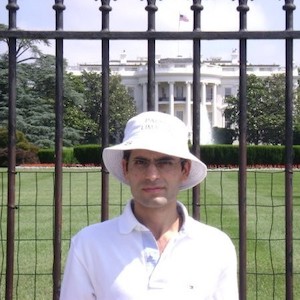Feature Articles
An introduction to Hyperledger Fabric
 One of the biggest projects in the blockchain industry, Hyperledger, is comprised of a set of open source tools and subprojects. It's a global collaboration hosted by The Linux Foundation and includes leaders in different sectors who are aiming to build a robust, business-driven blockchain framework. There are three main types of blockchain networks: public blockchains, consortiums or federated blockchains, and private blockchains. Hyperledger is a blockchain framework that aims to help companies build private or consortium permissioned blockchain networks where multiple organizations can share the control and permission to operate a node within the network. Since a blockchain is a transparent, immutable, and secure decentralized system, it is considered a game-changing solution for traditional supply chain industries. It can support an effective supply chain system by:
One of the biggest projects in the blockchain industry, Hyperledger, is comprised of a set of open source tools and subprojects. It's a global collaboration hosted by The Linux Foundation and includes leaders in different sectors who are aiming to build a robust, business-driven blockchain framework. There are three main types of blockchain networks: public blockchains, consortiums or federated blockchains, and private blockchains. Hyperledger is a blockchain framework that aims to help companies build private or consortium permissioned blockchain networks where multiple organizations can share the control and permission to operate a node within the network. Since a blockchain is a transparent, immutable, and secure decentralized system, it is considered a game-changing solution for traditional supply chain industries. It can support an effective supply chain system by:
How Do Hospitals Know What To Do When Hurricanes Approach?
 We all expect hospitals to be open and operating when we need them, but extreme weather events like hurricanes are a strain on resources and pose significant challenges for hospitals. Closing a hospital is an extreme action, but several hospitals in Florida, Georgia and South Carolina did just that before the arrival of Hurricane Irma in 2017.With more than 300 hospitals and a higher share of older adults than any other state, emergency plans for Florida’s hospitals were a critical issue facing emergency planners during those storms. This is true now as well as Hurricane Dorian approaches the state.
We all expect hospitals to be open and operating when we need them, but extreme weather events like hurricanes are a strain on resources and pose significant challenges for hospitals. Closing a hospital is an extreme action, but several hospitals in Florida, Georgia and South Carolina did just that before the arrival of Hurricane Irma in 2017.With more than 300 hospitals and a higher share of older adults than any other state, emergency plans for Florida’s hospitals were a critical issue facing emergency planners during those storms. This is true now as well as Hurricane Dorian approaches the state.
ONC's 3rd Interoperability Forum: Not Much to Report
 On August 21 and 22, 2019 the Office of the National Coordinator for Health Information Technology (ONC) held its third Interoperability Forum in Washington, DC. More than 600 individuals participated in person with many others viewing the general sessions via webinar. The conference began and ended with half-day plenary sessions while providing five tracks with smaller sessions in between. I attended the Health Information Exchange (HIE)/Community-based Information Exchange (CIE) breakout session on both days. The plenaries...focused on the current state and the future state of interoperability.
On August 21 and 22, 2019 the Office of the National Coordinator for Health Information Technology (ONC) held its third Interoperability Forum in Washington, DC. More than 600 individuals participated in person with many others viewing the general sessions via webinar. The conference began and ended with half-day plenary sessions while providing five tracks with smaller sessions in between. I attended the Health Information Exchange (HIE)/Community-based Information Exchange (CIE) breakout session on both days. The plenaries...focused on the current state and the future state of interoperability.
Mr Fax goes to Washington D.C.
 Recently, I had the honor of travelling to Washington D.C. to speak on behalf of a substantive and important policy issue, digital cloud fax technology (DCFT) and interoperability in the health care industry. Federal officials are on a mission to create a seamless exchange of personal health information (PHI) and electronic health records (EHR). That's the layman's definition of interoperability. Although I am a layman on Capitol Hill, J2 Global Inc (J2), a provider of eFax Cloud Services remains a champion for DCFT. We are a key player in the field and we used our influence to educate federal officials about an issue that is extremely important to us and to our customers. Specifically, we were there to speak about a proposed rule from the Centers for Medicare & Medicaid Services (CMS).
Recently, I had the honor of travelling to Washington D.C. to speak on behalf of a substantive and important policy issue, digital cloud fax technology (DCFT) and interoperability in the health care industry. Federal officials are on a mission to create a seamless exchange of personal health information (PHI) and electronic health records (EHR). That's the layman's definition of interoperability. Although I am a layman on Capitol Hill, J2 Global Inc (J2), a provider of eFax Cloud Services remains a champion for DCFT. We are a key player in the field and we used our influence to educate federal officials about an issue that is extremely important to us and to our customers. Specifically, we were there to speak about a proposed rule from the Centers for Medicare & Medicaid Services (CMS).
Americans Focus On Responding To Earthquake Damage, Not Preventing It, Because They Are Unaware Of Their Risk
 On July 4 and 5, two major earthquakes, followed by several thousand smaller ones, struck Southern California. Their size and the damage they caused captured attention around the country. What tends to get much less notice from the public is what can be done to prevent catastrophic damage from big quakes. Had the epicenter of these latest large California earthquakes been closer to downtown Los Angeles, tens of thousands of apartment buildings could have been damaged or collapsed. Consequently, structural engineers are calling on legislators to prepare for and prevent earthquake damage by crafting new and improved building codes...
On July 4 and 5, two major earthquakes, followed by several thousand smaller ones, struck Southern California. Their size and the damage they caused captured attention around the country. What tends to get much less notice from the public is what can be done to prevent catastrophic damage from big quakes. Had the epicenter of these latest large California earthquakes been closer to downtown Los Angeles, tens of thousands of apartment buildings could have been damaged or collapsed. Consequently, structural engineers are calling on legislators to prepare for and prevent earthquake damage by crafting new and improved building codes...
Is Scholarly Use of R Beating SPSS Already?
 One of us (Muenchen) has been tracking The Popularity of Data Science Software using a variety of different approaches. One approach is to use Google Scholar to count the number of scholarly articles found each year for each software. He chose Google Scholar since it searches "across many disciplines and sources: articles, theses, books, abstracts, and court opinions, from academic publishers, professional societies, online repositories, universities, and other web sites." Figure 1 shows the results from 1995 through 2016. Data collected in 2018 showed that while SPSS use dropped 39% drop from 2017 to 2018, its use was still 66% higher than R in 2018. Read More »
One of us (Muenchen) has been tracking The Popularity of Data Science Software using a variety of different approaches. One approach is to use Google Scholar to count the number of scholarly articles found each year for each software. He chose Google Scholar since it searches "across many disciplines and sources: articles, theses, books, abstracts, and court opinions, from academic publishers, professional societies, online repositories, universities, and other web sites." Figure 1 shows the results from 1995 through 2016. Data collected in 2018 showed that while SPSS use dropped 39% drop from 2017 to 2018, its use was still 66% higher than R in 2018. Read More »
Is the US Healthcare System Suffering from the Dunning-Kruger Effect?
 Psychologist David Dunning, originator of the eponymous Dunning-Kruger effect, recently gave an interview to Vox's Brian Resnick. For those of you not familiar with the Dunning-Kruger effect, it refers to the cognitive bias that leads people to overestimate their knowledge or expertise. More importantly, those with low knowledge/ability are most likely to overestimate it. Does this make anyone else think of the U.S. healthcare system? Professor Dunning proposed the effect in 1999, in a paper in Journal of Personality and Social Psychology, along with then-graduate student Justin Kruger. Since then, it has become widely known and broadly applied (not always accurately, as Dr. Dunning explains in the interview).
Psychologist David Dunning, originator of the eponymous Dunning-Kruger effect, recently gave an interview to Vox's Brian Resnick. For those of you not familiar with the Dunning-Kruger effect, it refers to the cognitive bias that leads people to overestimate their knowledge or expertise. More importantly, those with low knowledge/ability are most likely to overestimate it. Does this make anyone else think of the U.S. healthcare system? Professor Dunning proposed the effect in 1999, in a paper in Journal of Personality and Social Psychology, along with then-graduate student Justin Kruger. Since then, it has become widely known and broadly applied (not always accurately, as Dr. Dunning explains in the interview).
Open Education: There Isn't an App for That
 Open source software has saved my district-Penn Manor School District in Lancaster County, Pennsylvania-more than a million dollars on its technology budget. But more importantly, making a deliberate and concerted effort to infuse open principles and practices into our learning environments has cultivated a vibrant and inclusive learning community that cuts across the school. And as a result, student success has exceeded our expectations. But how do schools put open ideas into practice to foster future innovators and leaders? It's not as simple as installing Linux on 4,000 student laptops, holding hands, and singing the alma mater in the high school cafeteria.
Open source software has saved my district-Penn Manor School District in Lancaster County, Pennsylvania-more than a million dollars on its technology budget. But more importantly, making a deliberate and concerted effort to infuse open principles and practices into our learning environments has cultivated a vibrant and inclusive learning community that cuts across the school. And as a result, student success has exceeded our expectations. But how do schools put open ideas into practice to foster future innovators and leaders? It's not as simple as installing Linux on 4,000 student laptops, holding hands, and singing the alma mater in the high school cafeteria.
California’s Other Drought: A Major Earthquake Is Overdue
 California earthquakes are a geologic inevitability. The state straddles the North American and Pacific tectonic plates and is crisscrossed by the San Andreas and other active fault systems. Tragic quakes that occurred in 2017 near the Iran-Iraq border and in central Mexico, with magnitudes of 7.3 and 7.1, respectively, are well within the range of earthquake sizes that have a high likelihood of occurring in highly populated parts of California during the next few decades. The earthquake situation in California is actually more dire than people who aren't seismologists like myself may realize. Although many Californians can recount experiencing an earthquake, most have never personally experienced a strong one. For major events, with magnitudes of 7 or greater, California is actually in an earthquake drought. Multiple segments of the expansive San Andreas Fault system are now sufficiently stressed to produce large and damaging events.
California earthquakes are a geologic inevitability. The state straddles the North American and Pacific tectonic plates and is crisscrossed by the San Andreas and other active fault systems. Tragic quakes that occurred in 2017 near the Iran-Iraq border and in central Mexico, with magnitudes of 7.3 and 7.1, respectively, are well within the range of earthquake sizes that have a high likelihood of occurring in highly populated parts of California during the next few decades. The earthquake situation in California is actually more dire than people who aren't seismologists like myself may realize. Although many Californians can recount experiencing an earthquake, most have never personally experienced a strong one. For major events, with magnitudes of 7 or greater, California is actually in an earthquake drought. Multiple segments of the expansive San Andreas Fault system are now sufficiently stressed to produce large and damaging events.
It Takes Years To Fully Recover From Big Storms Like Sandy
 The 2012 hurricane widely known as Superstorm Sandy left at least an estimated 325,000 New Jersey homes damaged or destroyed. Nearly seven years later, many of the New Jersey residents who have not fully recovered have to fend for themselves. The government funding has mostly dried up. Only two nonprofits that help survivors remain engaged...While researching the recovery efforts after Sandy, I have found that up to a third of the 2.5 million people who live in Keansburg, Belmar, Toms River and other places along the New Jersey coastline and back bays struck by the storm had not fully recovered from this disaster by October 2017 - five years later. Today, almost seven years after the storm, a lack of data and the patchwork of assistance programs make it difficult to fully assess what remains to be done.
The 2012 hurricane widely known as Superstorm Sandy left at least an estimated 325,000 New Jersey homes damaged or destroyed. Nearly seven years later, many of the New Jersey residents who have not fully recovered have to fend for themselves. The government funding has mostly dried up. Only two nonprofits that help survivors remain engaged...While researching the recovery efforts after Sandy, I have found that up to a third of the 2.5 million people who live in Keansburg, Belmar, Toms River and other places along the New Jersey coastline and back bays struck by the storm had not fully recovered from this disaster by October 2017 - five years later. Today, almost seven years after the storm, a lack of data and the patchwork of assistance programs make it difficult to fully assess what remains to be done.
U.S. Healthcare Is a Cadillac...Unfortunately
 The good news: the U.S. healthcare is a Cadillac. The bad news: it's not an Escalade or even an XTS, it's a Cimarron, which is on most experts' list not only of the worst Cadillacs ever but also the worst cars ever -- expensive and poor quality. It was literally a Chevy Cavalier dressed up and trying to pretend to be a luxury car. You probably get the metaphor. There was a time when "Cadillac" was essentially a synonym for quality. Products aspired to be "the Cadillac of ____." It was a compliment of the highest order, understood worldwide. Foreign auto manufacturers tried to match its quality and make a dent into its market share. There was a time with U.S. healthcare had that kind of status too.
The good news: the U.S. healthcare is a Cadillac. The bad news: it's not an Escalade or even an XTS, it's a Cimarron, which is on most experts' list not only of the worst Cadillacs ever but also the worst cars ever -- expensive and poor quality. It was literally a Chevy Cavalier dressed up and trying to pretend to be a luxury car. You probably get the metaphor. There was a time when "Cadillac" was essentially a synonym for quality. Products aspired to be "the Cadillac of ____." It was a compliment of the highest order, understood worldwide. Foreign auto manufacturers tried to match its quality and make a dent into its market share. There was a time with U.S. healthcare had that kind of status too.
Why Cloud for Health IT? Sharing our Experience at careMESH

If you want true, robust security, it is increasingly difficult to argue against cloud, given the advancements and growth in major service providers such as Google, Amazon, or Microsoft. No matter how many security staff members or how much cybersecurity experience you have, the major service providers have more. It's no surprise that across industries, investment in cloud computing, storage and infrastructure are predicted to grow at a rate of 17% annually over the next 3 years.[i]
Data Science Jobs Report 2019: Python Way Up, Tensorflow Growing Rapidly, R Use Double SAS
 In my ongoing quest to track The Popularity of Data Science Software, I've just updated my analysis of the job market. To save you from reading the entire tome, I'm reproducing that section here.One of the best ways to measure the popularity or market share of software for data science is to count the number of job advertisements that highlight knowledge of each as a requirement. Job ads are rich in information and are backed by money, so they are perhaps the best measure of how popular each software is now. Plots of change in job demand give us a good idea of what is likely to become more popular in the future. Read More »
In my ongoing quest to track The Popularity of Data Science Software, I've just updated my analysis of the job market. To save you from reading the entire tome, I'm reproducing that section here.One of the best ways to measure the popularity or market share of software for data science is to count the number of job advertisements that highlight knowledge of each as a requirement. Job ads are rich in information and are backed by money, so they are perhaps the best measure of how popular each software is now. Plots of change in job demand give us a good idea of what is likely to become more popular in the future. Read More »
Mystery Consent Forms and the Scourge of Surprise Medical Bills
 We are, it appears, shocked -- shocked! -- that there are "surprise" bills in healthcare. That is, bills from out-of-network healthcare professionals, even when patients thought they were going to in-network professionals/facilities. The problem is bad enough that even our deeply divided Congress has bipartisan agreement that it should act (although whether it will, of course, remains to be seen). Of course, surprise billing shouldn't come as a surprise to anyone who knows much about healthcare; it is more of a symptom of problems with our healthcare system than a problem itself. Kaiser Health News/NPR deserve much credit for getting more attention for the issue, with their Bill of the Month crowdsourced investigation.
We are, it appears, shocked -- shocked! -- that there are "surprise" bills in healthcare. That is, bills from out-of-network healthcare professionals, even when patients thought they were going to in-network professionals/facilities. The problem is bad enough that even our deeply divided Congress has bipartisan agreement that it should act (although whether it will, of course, remains to be seen). Of course, surprise billing shouldn't come as a surprise to anyone who knows much about healthcare; it is more of a symptom of problems with our healthcare system than a problem itself. Kaiser Health News/NPR deserve much credit for getting more attention for the issue, with their Bill of the Month crowdsourced investigation.
Clinical Decision Support Strategies for Electronic Case Reporting and its Open Source Connection
 A key element of public health surveillance is the reporting of infectious and certain non-infectious conditions to state, local, and tribal public health agencies (PHA) around the United States. Historically, there have been a number of key challenges with the process of case reporting that is pervasive in the United States today. To help overcome some of these barriers, an effort has been underway to move the process of case reporting to electronic. A key component of the emerging electronic care reporting (eCR) strategy is the use of clinical decision support (CDS) to help clinical care organizations determine if a reportable condition is present in a patient's record. Multiple approaches have been identified for this CDS service, including a centralized model being implemented today, and several distributed options which will likely become equally viable. Given the size, diversity, and decentralized nature of healthcare enterprises, it is likely that all three approaches for CDS discussed in this article will be deployed simultaneously.
A key element of public health surveillance is the reporting of infectious and certain non-infectious conditions to state, local, and tribal public health agencies (PHA) around the United States. Historically, there have been a number of key challenges with the process of case reporting that is pervasive in the United States today. To help overcome some of these barriers, an effort has been underway to move the process of case reporting to electronic. A key component of the emerging electronic care reporting (eCR) strategy is the use of clinical decision support (CDS) to help clinical care organizations determine if a reportable condition is present in a patient's record. Multiple approaches have been identified for this CDS service, including a centralized model being implemented today, and several distributed options which will likely become equally viable. Given the size, diversity, and decentralized nature of healthcare enterprises, it is likely that all three approaches for CDS discussed in this article will be deployed simultaneously.